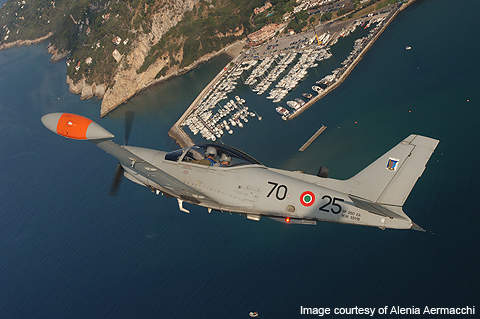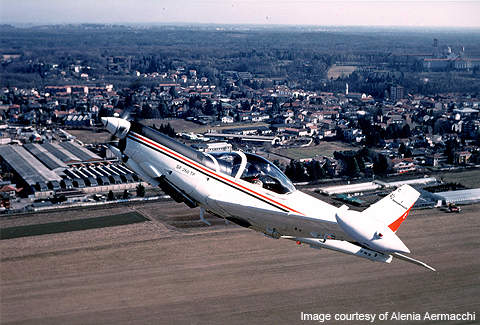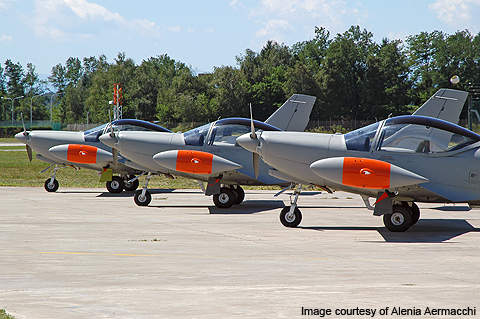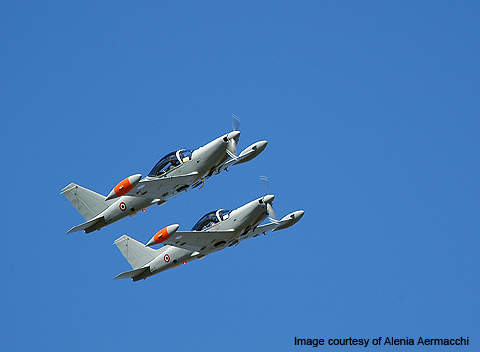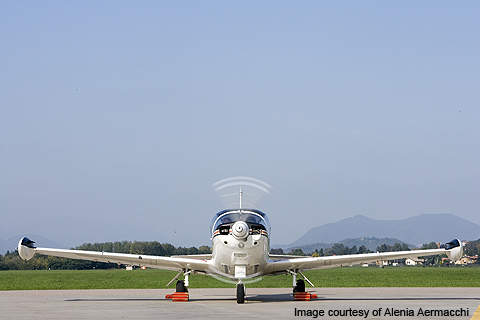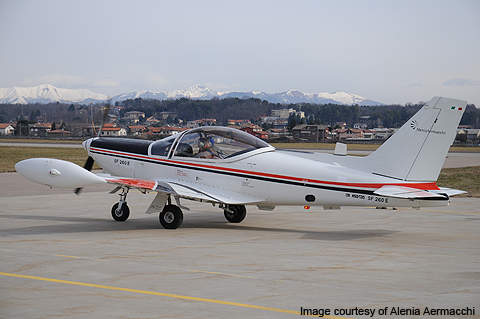The SF-260 is a two-seat light trainer / attack aircraft designed by Stelio Frati and manufactured by Alenia Aermacchi of Italy. The SF-260 can perform various functions including training, instrument flying, aerobatics, night flying, navigation flying and formation flying. It is an advanced trainer aircraft currently used by civil professional flying schools. About 880 aircraft are currently operational worldwide.
The maiden flight of the SF-260 was completed on 15 July 1964. The aircraft has been selected by 27 air forces worldwide to train professional military pilots and is fully operational in both civil and military pilot training bases in several countries.
SF-260 variants
The SF-260 has 14 variants. The SF-260 is an advanced and production variant of F-260, while the SF-260A is the first civilian version powered by 260hp Lycoming O-540-E engine. It is used as a tourer and trainer aircraft for airliners.
SF-260M is an upgraded model of the SF-260A.It is a military aircraft featuring robust airframe and ameliorated aerodynamics. The variant first flew on 10 October 1970. The SF-260AM is an advanced version of the SF-260M. About 33 SF-260AM’s were procured by Italian Air Force. An export variant, the SF-260ML, was acquired by Libya. About 240 aircraft were manufactured.
SF-260W is a warrior version of the SF-260M, and equipped with two underwing hardpoints for installation of weapons. The variant comprising tough airframe and wings can perform low-level strike, forward air control, armed reconnaissance and liaison. SF-260SW is a sea warrior variant currently being used for patrolling coastal areas and protecting fisheries.
SF-260B, first unveiled in 1974, is an improved version of the SF-260M. It is the second civilian aircraft that features structural aerodynamics and a large stabiliser.
SF-260C is an enhanced model of the SF-260B. The variant additionally features reduced seats, skidding instrument panel, quick landing gear motor and battery relocation. It was introduced in 1977. SF-260TP, which entered into service in 1980, is a turboprop version of the SF-260C. It is powered by Allison 250-B17D turboprop engine.
SF-260D is manufactured by upgrading the SF-260C with highly efficient 260hp IO-540-D4A5 or AEIO-540-D4A5 engine and few improvements.
The improvements made to SF-260C include reducing the nose landing gear, a reorganised electrical system and a central emergency canopy. The variant was first introduced in 1985.
SF-260E is an upgraded version of the SF-260D with a 260hp IO-540-E4AF engine. The variant is principally developed for the US Air Force. The SF-260F is an advanced version of the SF-260E and is equipped with additional engine fuel system.
SF-260EA is the latest version to be adopted by the Italian Air Force. It is equipped with an advanced avionics suite and improved cockpit. Ventilation in the cockpit has been enhanced by fitting advanced air conditioning systems.
SF-260 orders and deliveries
Alenia Aermacchi was awarded a $13.1m contract by The Department of National Defence in the Philippines to provide 18 advanced SF-260 trainer aircraft for the Philippine Air Force (PAF) under its forces modernisation programme. The contract also encompasses providing integrated logistics package such as supplying initial equipment and spare parts after sale.
A €33m ($40m) contract was awarded to Alenia Aermacchi by the Italian Air Force in 2005 to supply 30 SF-260EA aircraft. The contract also included providing training and logistics support services. The deliveries began in 2005 and the last two aircraft were delivered to the Italian Air Force in July 2007.
SF-260 development
The SF-260 was initially designed and built for Aviamilano Costruzione Aeronautiche located in Milan. The first prototype aircraft of Aviamilano was designated the F-260.
The mass production of SF-260 began after SIAI Marchetti purchased development rights from Aviamilano. Production continued until Aermacchi acquired the firm in 1997. The F-260 was later renamed the SF-260 and production continued.
SF-260 cockpit
The SF-260 features an ergonomic cockpit that can accommodate a pilot and two passengers. The canopy design offers more spacious and comfortable cockpit compared with the SF-260AM configuration. The third seat incorporated in the cockpit of SF-260 allows for expansion during non-aerobatic missions.
Navigation
The aircraft is equipped with a navigation suite that includes an instrument landing system (ILS), distance measuring equipment (DME), automatic direction finder (ADF), global positioning system (GPS), attitude direction indicator (ADI) and horizontal situation indicator (HSI). The navigation system offers flight safety, effective training and fully instrumental landing.
Communications
The radio communication system installed in the aircraft comprises two very-high-frequency (VHF) and ultra-high-frequency (UHF) transceivers and an interphone system. These systems are principally used for communication between the ground control unit and pilots.
Engine
The SF-260 is powered by a single Textron Lycoming AEIO-540 D4A5 piston engine. Each engine can produce 260hp (195kW) of power. It is a six-cylinder, air-cooled engine manufactured by Textron Lycoming, US. The engine is equipped with a fuel injection system.
A two-blade AHC-C2YK-1 BF/F8477-8R propeller is fitted, with an output speed of 2,700rpm. The length of the engine varies from 38.42in (0.97m) to 39.34in (0.99m). The width and height of the engine are 33.37in (0.84m) and 24.46in (0.62m) respectively. The dry weight of the engine varies from 410lb (185kg) to 412lb (186kg).
Performance
The SF-260 can climb at the rate of 548m a minute. The maximum and cruise speed of the aircraft is 182kt. Its stall speed is 59kt. The range and service ceiling of the SF-260 are 2,050km and 6,096m respectively. Its take-off ground run is 275m and the landing ground run is 270m. The aircraft weighs around 840kg and its maximum take-off weight is 1,200kg.

